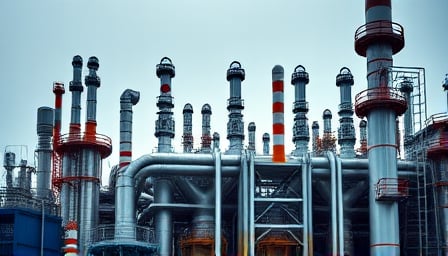Eastman Chemical Co. Faces Financial Headwinds Amid Market Volatility
In a challenging financial landscape, Eastman Chemical Co., a prominent player in the global chemicals sector, has reported a decrease in its second-quarter profits, falling short of market expectations. The company, headquartered in Kingsport, United States, and listed on the New York Stock Exchange, disclosed earnings of $140 million, or $1.20 per share, compared to $230 million, or $1.94 per share, in the same period last year. Adjusted earnings were reported at $186 million or $1.60 per share, missing analysts’ forecasts.
This financial performance comes at a time when the broader market is experiencing volatility. The S&P 500, which includes Eastman Chemical, has seen fluctuations, with the index losing 1.79% to close at 6,225.85 points on a recent Friday afternoon. This downturn reflects broader market sentiment, as investors navigate through economic uncertainties.
Reflecting on a decade-long investment horizon, Eastman Chemical’s stock has not fared well. A decade ago, the stock was trading at $78.40. An investment of $10,000 at that time would have resulted in a portfolio of approximately 127,551 shares. Today, with the stock closing at $72.61, the investment would be valued significantly lower, highlighting the challenges faced by long-term investors in the company.
Despite these setbacks, Eastman Chemical remains a key player in the chemicals industry, specializing in a diverse range of products including coatings, adhesives, specialty polymers, inks, fibers, and performance chemicals. The company’s market capitalization stands at $8.93 billion, with a price-to-earnings ratio of 9.124, indicating potential for recovery as market conditions stabilize.
As Eastman Chemical navigates through these financial challenges, the company’s strategic focus on innovation and sustainability may provide a pathway to regaining investor confidence and achieving long-term growth. Investors and stakeholders will be closely monitoring the company’s performance in the coming quarters, as well as broader market trends, to assess the potential for recovery and growth in the volatile economic environment.
